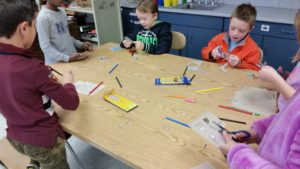10.19.16 The Rubber Band Project started it’s second project of the year. Building off of our unit on LED circuit cards, students examined the classic board game Operation. Students played the game for a while. Then students took apart the game, and tried to figure out how it works. Students contemplated how the circuit is completed when you play Operation and touch the tweezers to the metal side. Students then brainstormed ideas for their own games.
11.2.16 This session we focused on showing students how Makey-Makey works, and started students building scratch coding for their games.
11.16 students continued to work on their games. Some students coded in scratch, others built game pieces with shrinky dink materials, others worked on physical game boards.
An interesting thing that has happened with this project is that students have been more in control of their google drives. We’ve shown them how to share a folder with the whole class, and then add that folder to their own drive, so they can save their scratch code in a shared place that they can locate easily on a different device in the future.
12.3.16 Students continued to work on their projects.
12.14.16 As students are getting ready to integrate their board games with Makey-Makey circuits Mrs. Gross did a demo of how this is going to work together. ( See the new pictures with wholes for game pieces.)
1.11.17 Today students made great progress. Today students began integrating their game boards with circuits. Students had great questions about how to connect their circuits to the game boards, and how to capture pieces so they would not fall out and be lost. This continued great design process thinking that is the main focus of STEAM club.
Underneath the pictures is a list of the standards we worked on in this unit.
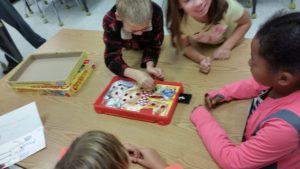 |
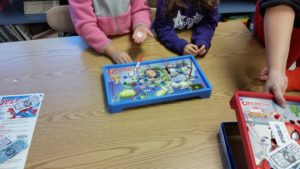 |
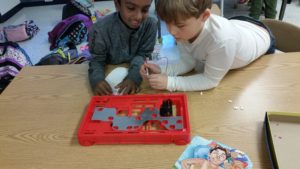 |
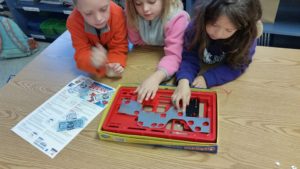 |
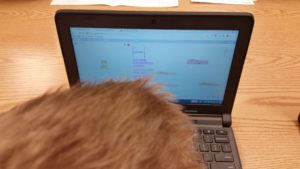 |
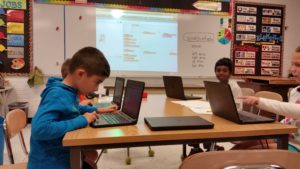 |
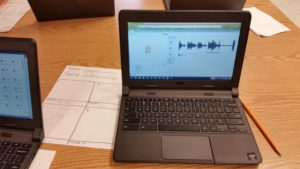 |
|
|
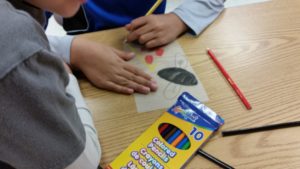 |
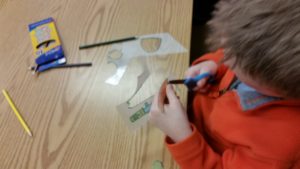 |
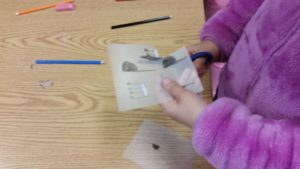 |
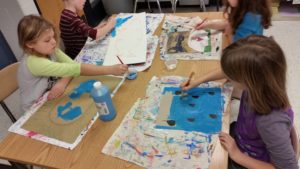 |
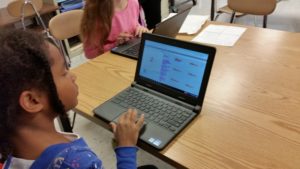 |
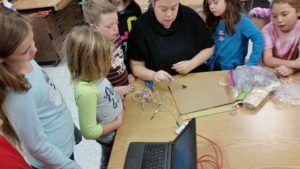 |
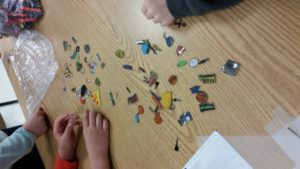 |
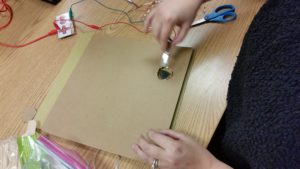 |
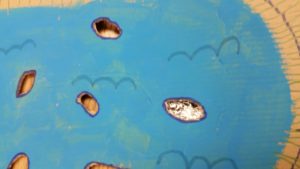 |
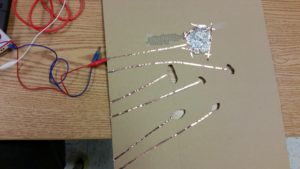 |
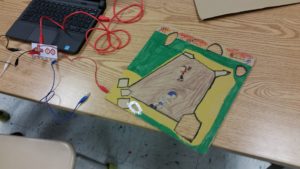 |
CCSS.ELA-LITERACY.RST.6-8.3: Follow precisely a multistep procedure when carrying out experiments, taking measurements, or performing technical tasks.CCSS.ELA-LITERACY.RST.9-10.8: Assess the extent to which the reasoning and evidence in a text support the author’s claim or a recommendation for solving a scientific or technical problem.MS-ETS1-1: Define the criteria and constraints of a design problem with sufficient precision to ensure a successful solution, taking into account relevant scientific principles and potential impacts on people and the natural environment that may limit possible solutions.
MS-ETS1-2: Evaluate competing design solutions using a systematic process to determine how well they meet the criteria and constraints of the problem.
HS-PS3-3: Design, build, and refine a device that works within given constraints to convert one form of energy into another form of energy.
(VA:Cr1.1.4a) Brainstorm multiple approaches to a creative art or design problem.
